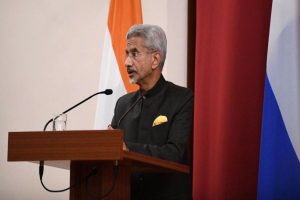A recent study has cast a spotlight on the escalating Urban Heat Island (UHI) phenomenon in Kolkata Metropolitan Corporation (KMC), its surrounding areas and other urban towns in West Bengal, revealing a significant rise in land surface temperature (LST) that is intensifying the UHI effect and causing considerable discomfort for the residents living in Kolkata and urban towns.
The study attributes this alarming trend to rapid urbanization marked by an increase in high-rise buildings and population density, coupled with a concerning decline in greenery. This decline has led to lower normalized difference vegetation index (NDVI) values, underscoring the critical role of urban green spaces in regulating the city’s climate.
Advertisement
Over the past three decades, Kolkata has witnessed a drastic transformation in its green spaces, losing 23.38 square kilometres of greenery. The per-capita urban green space has plummeted from 15.92 square metres per person in 1991 to a mere 7.15 square metres per person in 2021. Projections indicate a further decline to approximately 2.92 square metres per person by 2031. This stark reduction falls well below the World Health Organization’s recommended minimum standard of 9 square metres per person, highlighting a growing urban crisis.
The study points to immense pressure on KMC, which serves a floating population of 6 million and a residential population of 4.5 million. The relentless demand for residential facilities, administrative services, business and commercial establishments, and medical services has driven the conversion of green spaces into built-up areas. This trend is not unique to Kolkata; similar patterns have been observed in other cities such as Siliguri, Durgapur, Asansol, Burdwan, and Midnapore.
The distribution of land surface temperature over time showcases notable changes across these cities. For instance, the mean LST in Siliguri city was observed to be 29.06°C, while the forest area maintained a lower temperature of 26.83°C in May. In Asansol, despite the city being predominantly green, the per capita green space is a negligible 0.27 square meters per city dweller. Durgapur follows a similar pattern with 0.28 square metres per capita. In contrast, Burdwan and Midnapore cities have more per capita green space, with 15.25 and 13.48 square metres, respectively.
The study underscores a negative relationship between NDVI and LST, indicating that disappearing green spaces are a significant factor in rising temperatures. This trend poses a threat to the sustainability of both the natural and social spheres of the city. The adverse impacts of this rapid decline in green space are evident in increased air and noise pollution, the creation of microclimates within the urban heat island, and a loss of biodiversity.
Dr Pravat Kumar Shit, an environmentalist, emphasized the critical role of urban green spaces (UGS). He noted that these spaces are gradually being transformed into built-up land in every city. Dr Shit highlighted the importance of landscaping vegetation in urban areas, which beautifies the city’s environment and transforms the urban microclimate into a healthier and more favorable setting for city dwellers. Green spaces significantly contribute to regulating the city’s climate by mitigating the urban heat island effect. This is achieved by increasing humidity in the air, decreasing land surface temperature, and improving overall air quality in the city and its surrounding areas.
The reduction of green spaces across many Indian cities due to urbanization is a growing concern. Cities like Delhi, Kolkata, and Bangalore have lost significant portions of their open spaces and urban wetlands, affecting their drainage networks and groundwater levels. The per capita availability of green spaces in urban areas has drastically reduced. In response, the Kolkata Municipality has decided to plant deep-rooted trees such as neem, cedar, jamun, and jackfruit to mitigate cyclone damage and improve afforestation efforts.
This re-evaluation of urban living is crucial for ensuring a sustainable and healthier future for India’s burgeoning urban populace. Integrating comprehensive green space strategies into future urban planning is imperative to mitigate the adverse effects of urbanization and climate change.
The findings from this study serve as a wake-up call, urging policymakers, urban planners, and residents alike to prioritize green spaces in urban development plans. The need for immediate and sustained action is critical to preserve the quality of life in Kolkata and other rapidly urbanizing cities.











